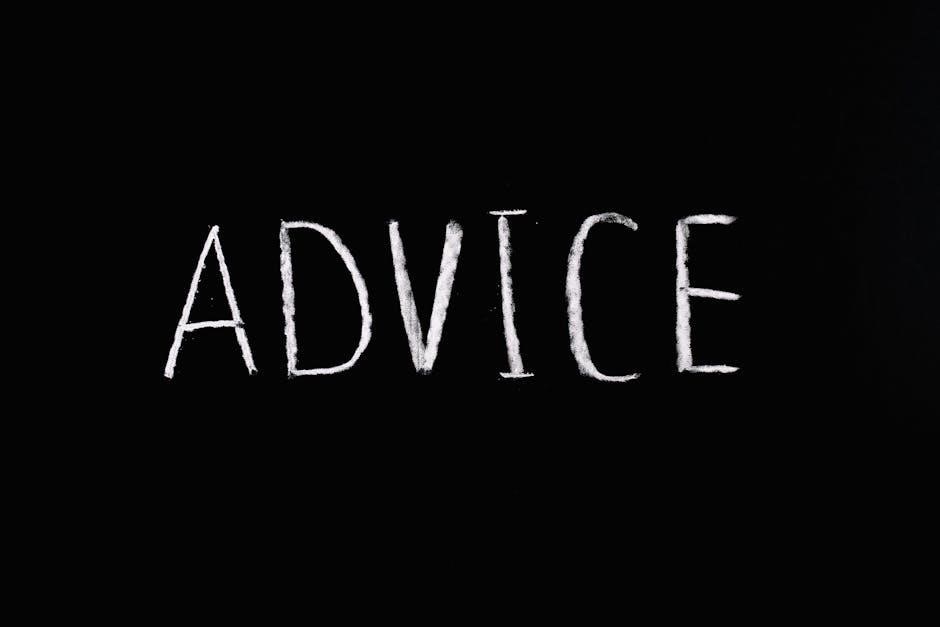National Pipe Tapered (NPT) threads are a U.S. standard for tapered pipe connections, ensuring leak-proof seals in industrial applications. This chart provides essential dimensions, sizes, and specifications for NPT threads, helping engineers and technicians identify and use the correct pipe fittings efficiently.
Overview of NPT Pipe Threads
NPT (National Pipe Tapered) threads are a widely used American standard for tapered pipe connections, defined by ANSI/ASME B1.20.1. They feature a 60-degree thread angle and a 1:16 taper, ensuring a tight, tapered seal when properly engaged. NPT threads are commonly used in applications requiring a leak-proof connection, such as in plumbing, petroleum, and natural gas industries. The thread’s taper allows the connection to become tighter as it is screwed together, often requiring sealants like pipe dope or Teflon tape to prevent leaks. NPT threads are available in sizes ranging from 1/16 to 24 inches, making them versatile for various industrial needs. Their reliability and compatibility with standard fittings make them a preferred choice for many applications.
Importance of NPT Thread Charts
NPT thread charts are essential for ensuring compatibility, safety, and efficiency in piping systems. They provide standardized dimensions, thread angles, and pitches, enabling precise matching of pipes and fittings. These charts help avoid sizing errors, which could lead to leaks or system failures. By referencing NPT charts, engineers and technicians can quickly identify the correct thread specifications for their applications, ensuring proper sealing and integrity. Additionally, these charts facilitate compliance with industry standards, reducing the risk of non-conformance. Their role is critical in maintaining consistency across industrial piping systems, making them an indispensable tool for designers, manufacturers, and installers alike.
NPT Thread Dimensions and Specifications
NPT thread dimensions include major and minor diameters, threads per inch, and pitch. The 60-degree thread angle and 1.7899-degree taper ensure precise connections. Sealants are required for NPT but not NPTF, preventing leaks and ensuring integrity in industrial applications.
Common NPT Thread Sizes
The most frequently used NPT thread sizes range from 1/8 to 2 inches, with common sizes including 1/8, 1/4, 3/8, 1/2, 3/4, 1, 1-1/4, 1-1/2, and 2. These sizes are widely used in industrial applications due to their compatibility with standard fittings and pipes. Each size corresponds to specific measurements, such as major diameter and threads per inch (TPI), ensuring proper fit and leak-proof connections. For example, a 1/2 NPT thread has an outside diameter of 0.850 inches and 14 TPI, while a 3/4 NPT thread measures 1.050 inches with the same TPI. These standard sizes simplify installation and maintenance across various industries.
Threads Per Inch (TPI) and Pitch
Threads Per Inch (TPI) and pitch are critical specifications in NPT pipe threads. TPI refers to the number of threads within a one-inch length, while pitch is the distance between consecutive threads. Common TPI values for NPT threads include 14, 11.5, and 8, with corresponding pitches of 0.0714, 0.0870, and 0.125 inches. These measurements ensure compatibility and proper sealing when connecting pipes and fittings. For instance, a 1/2 NPT thread has 14 TPI, meaning there are 14 threads per inch, while a 1 NPT thread has 11.5 TPI. Accurate TPI and pitch values are essential for maintaining thread integrity and preventing leaks in industrial piping systems.
Major and Minor Diameters
The major diameter is the largest diameter of the NPT thread, while the minor diameter is the smallest. These measurements are vital for ensuring proper thread engagement and sealing. For example, a 1/2 NPT thread has a major diameter of approximately 0.850 inches and a minor diameter of 0.685 inches. The taper rate of 1/16 inch per inch ensures consistent engagement along the thread length. Accurate major and minor diameters are critical for maintaining the structural integrity and leak resistance of NPT connections. These dimensions are meticulously detailed in the NPT chart, aiding in the selection of compatible pipes and fittings for industrial applications.

NPT vs. NPTF: Key Differences
NPT requires a sealant for a leak-proof connection, while NPTF is designed for dry sealing with specially truncated threads. NPTF ensures tighter, more reliable joints without additional compounds.
Sealing Methods
NPT threads rely on sealants like pipe tape or pipe dope to create a leak-proof connection. These materials fill microscopic gaps between threads, preventing fluid leakage. Proper application ensures the seal withstands pressure and vibration. NPTF threads, however, are designed for dry sealing, eliminating the need for additional compounds. The truncated thread form in NPTF creates a tighter, more precise fit, reducing the risk of leaks without sealants. Both methods ensure reliable connections, but NPTF offers enhanced sealing efficiency in specific industrial applications. Understanding these sealing techniques is crucial for selecting the right thread type for your piping system requirements.
Applications and Usage
NPT threads are widely used in various industries for piping systems requiring tight, leak-resistant connections. Common applications include oil and gas, chemical processing, and hydraulic systems. They are ideal for high-pressure environments where reliability is critical. NPT connections are also found in plumbing, HVAC, and industrial machinery. Their tapered design ensures a secure fit, making them suitable for both static and dynamic applications. The versatility of NPT threads allows them to be used with a variety of materials, including stainless steel and carbon steel. This widespread adoption highlights their effectiveness in meeting diverse industrial needs, ensuring safe and efficient fluid transfer across multiple sectors.

NPT Thread Applications
NPT threads are widely used in oil, gas, chemical processing, and plumbing for their reliable, leak-resistant connections in high-pressure environments, ensuring durability and safety across various industrial applications.
Industry Usage
NPT threads are extensively used in various industries, including oil and gas, chemical processing, plumbing, and industrial manufacturing. They are ideal for high-pressure and high-temperature applications, ensuring reliable connections. In the oil and gas sector, NPT fittings are used for drilling equipment and pipelines. Chemical plants utilize NPT threads for processing equipment and storage tanks due to their leak-resistant properties. Additionally, NPT connections are common in hydraulic and pneumatic systems, where precise sealing is critical. Their tapered design and compatibility with sealants make them a preferred choice for demanding environments, ensuring durability and safety in industrial operations.
Common Materials Used
NPT threads are commonly found in fittings made from stainless steel, carbon steel, brass, and PVC. Stainless steel, particularly grades like SS304 and SS316, is widely used due to its corrosion resistance and durability. Carbon steel is preferred for high-strength applications, while brass offers excellent ductility and resistance to wear. PVC is ideal for low-pressure and corrosive environments, providing a cost-effective solution. These materials are chosen based on their compatibility with the operating conditions, ensuring longevity and reliable performance in various industrial settings.

NPT Compatibility with Other Standards
NPT threads are not directly compatible with NPS or BSP due to differences in thread angles and diameters, requiring adapters for cross-standard connections.
NPT vs. NPS
NPT (National Pipe Tapered) and NPS (National Pipe Straight) are both U.S. standards but differ in thread design. NPT threads are tapered, creating a wedging action for a tighter seal, while NPS threads are straight, relying on gaskets or O-rings for sealing. The angle between the threads is 60 degrees for both, but NPS threads have flat crests and roots, unlike NPT’s truncated crests. NPT is commonly used for joining pipes and fittings requiring a strong, leak-proof connection without additional sealing elements, whereas NPS is preferred in applications needing a straight thread connection with a focus on easy assembly and disassembly.
NPT vs. BSP
NPT (National Pipe Tapered) and BSP (British Standard Pipe) are two common pipe thread standards with distinct differences. NPT threads have a 60-degree angle and a 1:16 taper, requiring sealants for leak-proof connections. BSP threads, with a 55-degree angle, also have a 1:16 taper but rely on a gasket for sealing. NPT is widely used in North America, while BSP is common in Europe and other regions. Both standards ensure secure connections but differ in their thread geometry and sealing methods, making them incompatible without adapters. Understanding these differences is crucial for selecting the right fittings in global engineering projects.

Sealing Methods for NPT Threads
NPT threads require sealants like Teflon tape or pipe dope to create leak-proof connections. These materials provide lubrication and prevent galling, ensuring a secure seal.
Thread Sealants
Thread sealants are essential for NPT connections to prevent leaks. Commonly used sealants include Teflon tape and pipe dope. Teflon tape, also known as PTFE tape, is wrapped around the male threads to fill microscopic gaps, ensuring a tight seal. Pipe dope, a type of sealant compound, is applied to the threads and cures upon assembly, providing additional security. These sealants not only prevent leakage but also protect against corrosion and wear. Proper application is crucial to avoid over-tightening, which can damage the threads. Always choose a sealant compatible with the fluid or gas being conveyed to ensure safety and effectiveness in various industrial applications.
Best Practices for Leak-Proof Connections
To achieve leak-proof NPT connections, follow these best practices: always use thread sealants like Teflon tape or pipe dope, ensuring proper application to avoid over-tightening. Clean threads thoroughly before assembly to remove dirt or debris. Apply the recommended torque to prevent galling or stripping. Inspect threads for damage or wear, as compromised surfaces can lead to leaks. Ensure compatibility between materials and sealants, especially in high-pressure or chemical environments. Finally, test connections under operating conditions to verify integrity. Adhering to these practices ensures reliable, long-lasting seals in industrial piping systems.
























